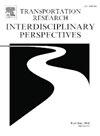移动医疗中以市民为中心的设计:主动交通推广的概念映射
IF 3.8
Q2 TRANSPORTATION
Transportation Research Interdisciplinary Perspectives
Pub Date : 2025-03-01
DOI:10.1016/j.trip.2025.101367
引用次数: 0
摘要
主动交通(AT)提供了一种增强日常身体活动和减轻交通相关污染的可持续手段。利用移动医疗(mhealth)技术可以成为促进AT行为的有价值的工具。然而,现有的干预措施往往缺乏基于证据的行为改变技术,并且很少让潜在的最终用户参与开发过程。本研究旨在探讨采用参与式方法通过移动医疗干预促进自动辅助医疗。方法我们与法国阿尔卑斯-滨海省的居民进行了在线概念绘图会议。参与者参与了头脑风暴、分类和评级,这些想法与旨在鼓励AT的应用程序功能有关。我们采用多维尺度和层次聚类分析来可视化参与者对这一主题的集体概念思维。数据根据参与者的人口统计数据进行分层,包括年龄、教育程度和典型的交通方式。结果参与者总共产生了44个被认为对培养AT行为有用的想法。这些想法形成了六个主要概念,按效率排序,以鼓励自动交通:基础设施(n = 9个想法),行程(n = 9),与政府接触(n = 4);数据(n = 12);应用可用性(n = 6);立法和行为准则(n = 4)。结论该研究强调了基础设施在促进交通运输方面的关键作用。旅行者还可以通过应用程序的功能有效地参与其中,例如有关航空运输基础设施的存在和质量的定制信息、混合多式联运旅行计划,以及不同旅行模式节省的时间和成本。通过该应用程序与地方政府合作被认为是一种新颖而有前途的AT推广方法。需要进一步调查针对不同人口群体的具体定制机会的迹象。本文章由计算机程序翻译,如有差异,请以英文原文为准。

Citizen-centric design in mHealth: Concept mapping for active transportation promotion
Purpose
Active transportation (AT) offers a sustainable means of enhancing daily physical activity and mitigating transportation-related pollution. Leveraging mobile health (mhealth) technology can be a valuable tool to promote AT behavior. However, existing interventions often lack evidence-based behavior change techniques and rarely involve potential end-users in the development process. This study aims to explore the promotion of AT through mhealth interventions using a participatory approach.
Methods
We conducted online concept mapping sessions with residents of the Alpes-Maritimes Department in France. Participants engaged in brainstorming, sorting, and rating of ideas related to app features designed to encourage AT. We employed multidimensional scaling and hierarchical cluster analysis to visualize the participants’ collective conceptual thinking on this subject. Data was stratified by participant demographics, including age, education, and typical mode of transportation.
Results
Participants collectively generated 44 ideas perceived as useful to fostering AT behaviors. These ideas formed six main concepts, ranked by efficiency to encourage AT as follows: Infrastructure (n = 9 ideas), Itinerary (n = 9), Contact with government (n = 4); Data (n = 12); App usability (n = 6); and Legislation and code of conduct (n = 4).
Conclusions
The study highlights the pivotal role of infrastructure in fostering AT. Travelers could also be effectively engaged through app features such as tailored information on the presence and quality of AT infrastructure, hybrid multimodal journey planning, and time and cost savings by different travel modes. Engaging with local governments via the app is identified as a novel and promising approach to AT promotion. Indications of specific tailoring opportunities for different demographic groups need to be further investigated.
求助全文
通过发布文献求助,成功后即可免费获取论文全文。
去求助
来源期刊

Transportation Research Interdisciplinary Perspectives
Engineering-Automotive Engineering
CiteScore
12.90
自引率
0.00%
发文量
185
审稿时长
22 weeks
 求助内容:
求助内容: 应助结果提醒方式:
应助结果提醒方式:


